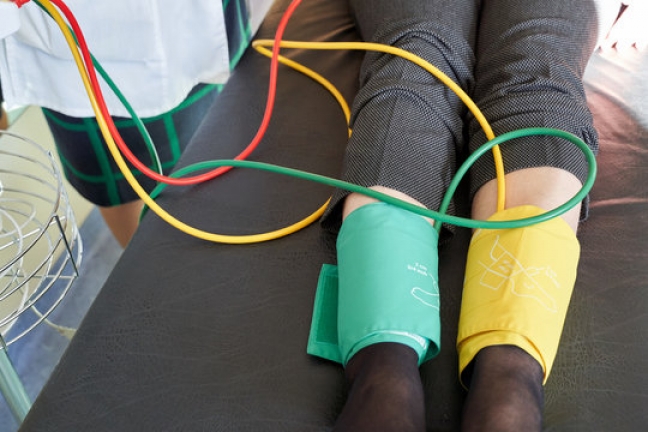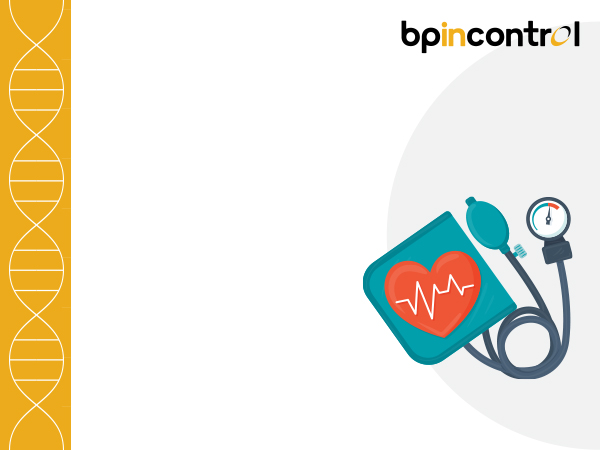Peripheral Artery Disease: Types, Stages, Symptoms & Causes

Table of Contents
Let’s talk about a topic that affects millions of people worldwide but often goes unnoticed until it becomes a serious concern — Peripheral Artery Disease, commonly known as PAD. This condition may not be as well-known as some other cardiovascular diseases, but it’s crucial to understand its implications, symptoms, causes, treatment options, and prevention strategies, to promote early detection and effective management.
PAD shares several risk factors with other cardiovascular diseases, including high cholesterol levels, hypertension, diabetes, a family history of heart-related issues, and a sedentary lifestyle. These factors contribute to the development of atherosclerosis, the underlying condition responsible for PAD.
In this blog article, our aim is to provide valuable insights into various aspects of PAD, empowering you with knowledge and understanding. Knowledge is power, and we are committed to equipping you with information on available treatment options and preventive measures. Understanding how to manage risk factors and adopt a healthier lifestyle can play a pivotal role in mitigating the impact of PAD and enhancing overall cardiovascular health.
Keep Reading!
What is Peripheral Artery Disease (PAD)?
Peripheral Artery Disease, or PAD, is a condition that affects the blood vessels outside the heart and brain, particularly the arteries supplying blood to the limbs, such as the legs and feet. It is a result of atherosclerosis, a condition where fatty deposits called plaques build up on the artery walls, narrowing the blood vessels and restricting the flow of oxygen-rich blood to the extremities. This reduced blood flow can lead to various symptoms and complications, making PAD a significant health concern.
PAD disease affects a large number of people, especially those aged 50 and above, but it can also occur in younger individuals with specific risk factors. While it’s essential to identify and manage PAD early on, it often goes unnoticed, as some of its symptoms can be mistaken for other conditions or simply brushed off as signs of ageing.
PAD is a progressive condition that demands attention and timely intervention. The reduced blood flow to the extremities can lead to a range of symptoms that impact an individual’s quality of life. Early diagnosis and proactive management of PAD are vital to prevent complications. If left untreated, PAD can progress to a stage called critical limb ischemia, characterised by severe pain, open sores, and a high risk of limb amputation. However, with proper medication, many individuals can effectively manage PAD and improve their quality of life.
Signs & Symptoms of Peripheral Artery Disease
Recognizing the signs and symptoms of PAD is crucial for early diagnosis and appropriate treatment. Here are some common symptoms to watch out for:
-
Intermittent Claudication: </b
This term refers to cramping, pain, or aching in the muscles of the legs or buttocks during physical activity. The discomfort often subsides with rest.
-
Leg Weakness or Numbness:
Some individuals may experience weakness or numbness in their legs, making it difficult to perform regular activities.
-
Slow or Weak Pulse in Legs:
A weakened or slow pulse in the legs and feet can indicate reduced blood flow.
-
Non-Healing Sores:
PAD can lead to poor wound healing, especially in the legs and feet, which may result in non-healing sores or ulcers.
-
Changes in Skin Color and Temperature:
The affected limb may appear pale, bluish, or discoloured, and the skin may feel cooler than usual.
-
Hair Loss or Slower Hair Growth:
Reduced blood flow to the limbs can lead to decreased hair growth or excessive hair loss.
-
Erectile Dysfunction:
In men, PAD can contribute to erectile dysfunction due to restricted blood flow to the pelvic area.
NOTE: These symptoms may not always be pronounced, and some people may not experience any symptoms at all. However, if you notice any of these signs, it’s essential to consult a healthcare professional for a proper evaluation.
Causes of Peripheral Artery Disease
The primary cause of PAD is atherosclerosis — forming plaques. Over time, these plaques harden and narrow the arteries, reducing blood flow to the extremities. Several factors can contribute to the development of atherosclerosis and PAD disease:
-
High Cholesterol:
Elevated levels of LDL cholesterol (often referred to as “bad” cholesterol) can lead to the formation of arterial plaques.
-
Smoking:
Tobacco use damages the blood vessels, making them more susceptible to plaque buildup.
-
High Blood Pressure:
Uncontrolled hypertension puts added stress on the arteries, promoting the development of atherosclerosis.
-
Diabetes:
People with diabetes are at a higher risk of developing PAD due to the effect of high blood sugar on blood vessels.
-
Age and Family History:
Advancing age and a family history of PAD or cardiovascular disease can increase the likelihood of developing the condition.
-
Obesity and Sedentary Lifestyle:
Being overweight and leading a sedentary lifestyle can contribute to various risk factors for PAD.
Stages of Peripheral Artery Disease
PAD can be classified into four stages based on the severity of the condition. Let’s take a look at each stage:
-
Stage 1 – Asymptomatic:
In this early stage, individuals may have PAD, but no noticeable symptoms are present. As a result, PAD often goes undiagnosed during this phase. Routine health screenings are essential to detect PAD at this asymptomatic stage and initiate timely management.
-
Stage 2 – Claudication:
As PAD advances, intermittent claudication becomes evident. This refers to pain, cramping, or discomfort experienced during physical activity due to inadequate blood flow to the muscles. The pain typically subsides with rest. Individuals may find themselves limiting physical activities to alleviate the discomfort.
-
Stage 3 – Rest Pain:
At this stage, the blood flow to the limbs is further restricted, resulting in pain even during periods of rest, especially at night. Rest pain is a critical indicator of advanced PAD and requires prompt medical attention.
-
Stage 4 – Critical Limb Ischemia:
This is the most severe stage of PAD, marked by severely compromised blood flow to the affected limb. Critical Limb Ischemia (CLI) can lead to tissue damage, non-healing sores, and an elevated risk of limb loss. Immediate medical intervention is necessary to salvage the limb and prevent amputation.
Early detection and proactive management of PAD are crucial to prevent complications and improve overall outcomes. Lifestyle modifications, medication, and interventional procedures can be employed to effectively manage PAD at different stages.
How is peripheral artery disease diagnosed?
Diagnosing Peripheral Artery Disease (PAD) involves a series of tests and examinations performed by healthcare professionals to evaluate blood flow to the extremities and identify any arterial blockages or abnormalities. Let’s take a closer look at the common diagnostic methods:
-
Ankle-Brachial Index (ABI):
This non-invasive test is a simple and effective way to assess blood flow to the legs. The healthcare provider will measure blood pressure in both arms and ankles using a blood pressure cuff and a Doppler ultrasound device. By comparing the ankle pressure to the arm pressure, the ABI can determine if there is reduced blood flow to the lower extremities, indicating possible PAD.
-
Doppler Ultrasound:
This imaging technique utilises sound waves to visualise blood flow through the arteries. During a Doppler ultrasound scan, a handheld device called a transducer is placed over the skin, emitting sound waves that bounce off the blood cells and create images of the blood flow. This test helps identify any arterial blockages or narrowing.
-
Angiography:
In certain cases, angiography may be required to provide more detailed images of the blood vessels. During this procedure, a contrast dye is injected into the arteries, and X-rays are taken to visualise the blood flow and detect any obstructions or abnormalities. Angiography can pinpoint the exact location and severity of arterial blockages, helping healthcare professionals determine the most suitable treatment approach.
-
Computed Tomographic Angiography (CT) and Magnetic Resonance Angiography (MRA):
These advanced imaging techniques use CT scans or magnetic resonance imaging (MRI) to create detailed images of the blood vessels. Here as well a contrast dye is often used during CT and MRA scans to enhance the visibility of the blood vessels. These tests can provide comprehensive information about the extent and location of arterial blockages.
-
Blood Tests:
Blood tests may be performed to assess certain risk factors and underlying conditions associated with PAD. For instance, cholesterol levels, blood glucose levels, and markers of inflammation may be measured to evaluate the risk of atherosclerosis and other cardiovascular diseases.
Treatment for Peripheral Artery Disease
Treatment for PAD aims to manage symptoms, slow disease progression, and reduce the risk of complications. Treatment options may include:
-
Lifestyle Changes:
Adopting a healthy lifestyle, including regular exercise, a balanced diet, and smoking cessation, can significantly improve PAD symptoms and overall cardiovascular health.
-
Medications:
Healthcare providers may prescribe medications to manage risk factors such as high cholesterol, high blood pressure, and blood clot formation.
-
Peripheral Angioplasty and Stenting:
These minimally invasive procedures help open narrowed or blocked arteries, improving blood flow.
-
Bypass Surgery:
In severe cases, bypass surgery can be necessary to redirect blood flow around the blocked artery, enhancing circulation and lowering the risk of heart attack and other critical cardiovascular events.
Conclusion
Peripheral Artery Disease is a condition that demands attention and early detection. Knowing its signs and symptoms can empower individuals to seek medical help promptly. By understanding the causes and stages of PAD, we can take steps to manage risk factors and improve overall cardiovascular health.
As we wrap up our discussion, it’s essential to emphasise the importance of maintaining healthy blood pressure and seeking timely medical advice. With BP in Control‘s online portal “Find a Physician“, individuals can easily locate the best physicians in their area, helping them make informed decisions about their health and receive the necessary guidance on topics like heart attack prevention and tips to maintain blood pressure.
For more valuable insights on various health topics related to heart health, including heart attack prevention and maintaining optimal blood pressure, visit BP in Control website.
Disclaimer
The information contained in this article is to educate, spread awareness in relation to hypertension and other diseases to the public at large. The contents of this article are created and developed by BPinControl.in through its authors, which has necessary, authorisations, license, approvals, permits etc to allow usage of this articles on The Website. The views and opinions expressed in this article are views, opinions of the respective authors and are independently endorsed by doctors. Although great care has been taken in compiling and checking the information in this article, The Website shall not be responsible, or in any way liable for any errors, omissions or inaccuracies in this article whether arising from negligence or otherwise, or for any consequences arising therefrom. The content of this article is not a substitute for any medical advice. The Website shall not be held responsible or liable for any consequence arising out of reliance on the information provided in the article.


Comments (0)
No comments found.Add your comment